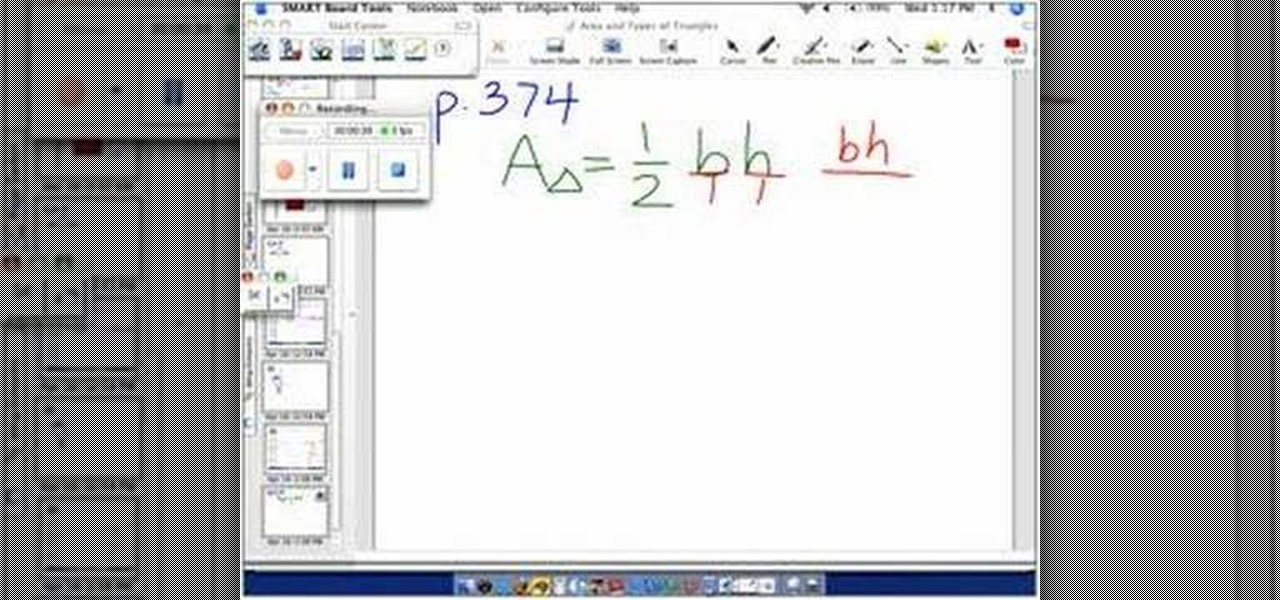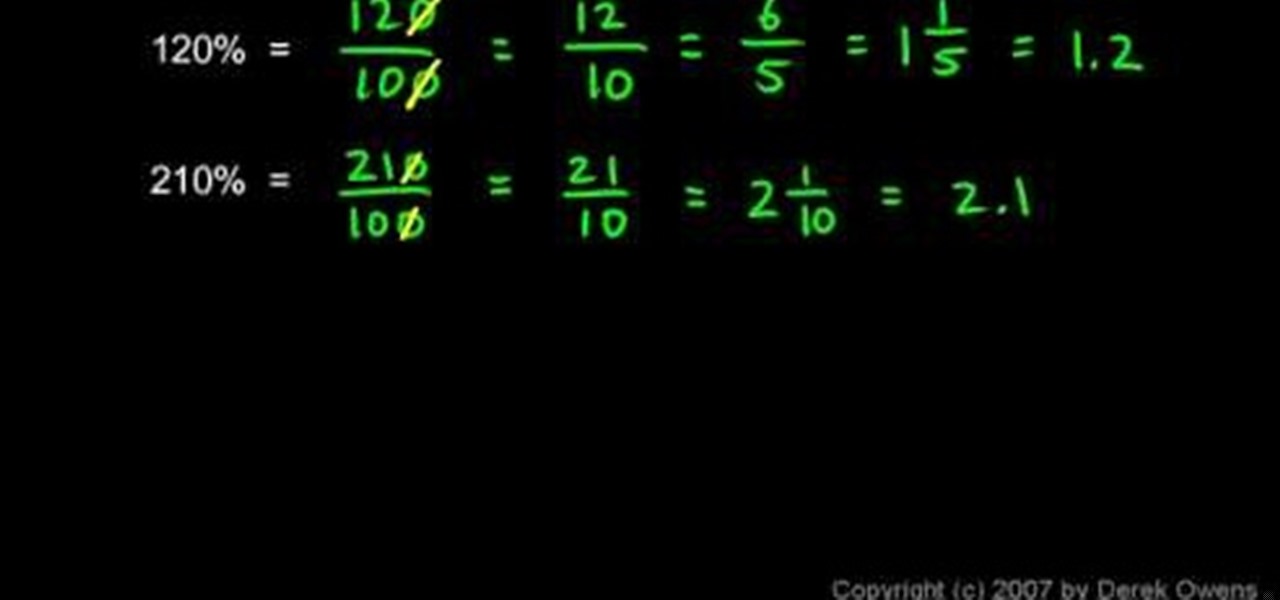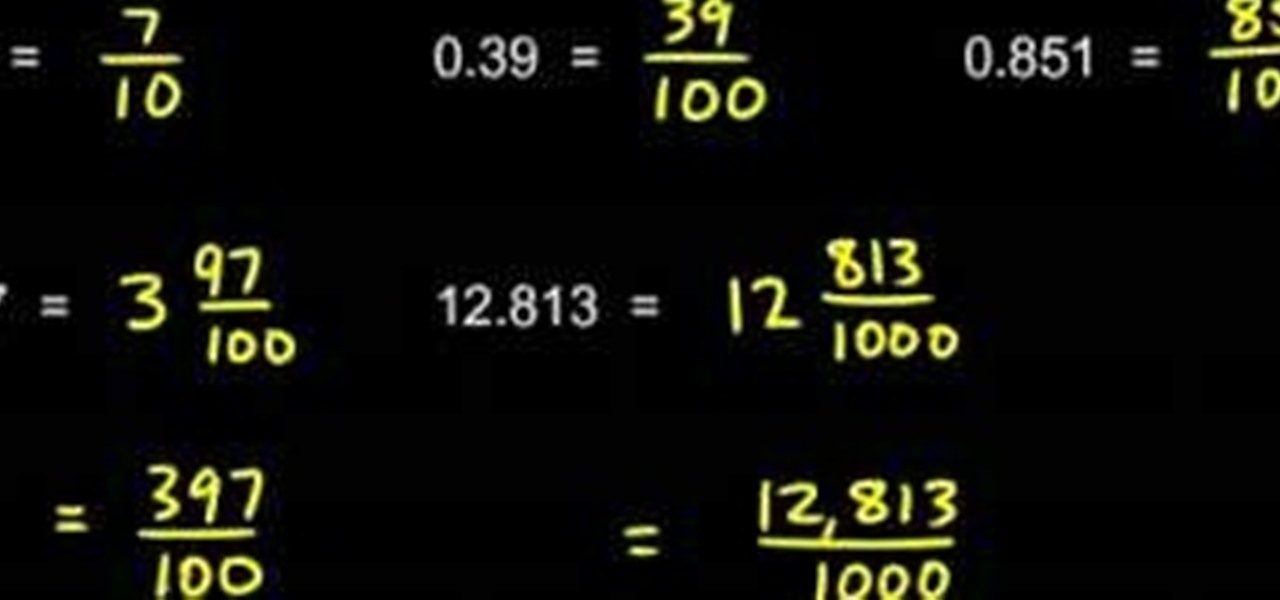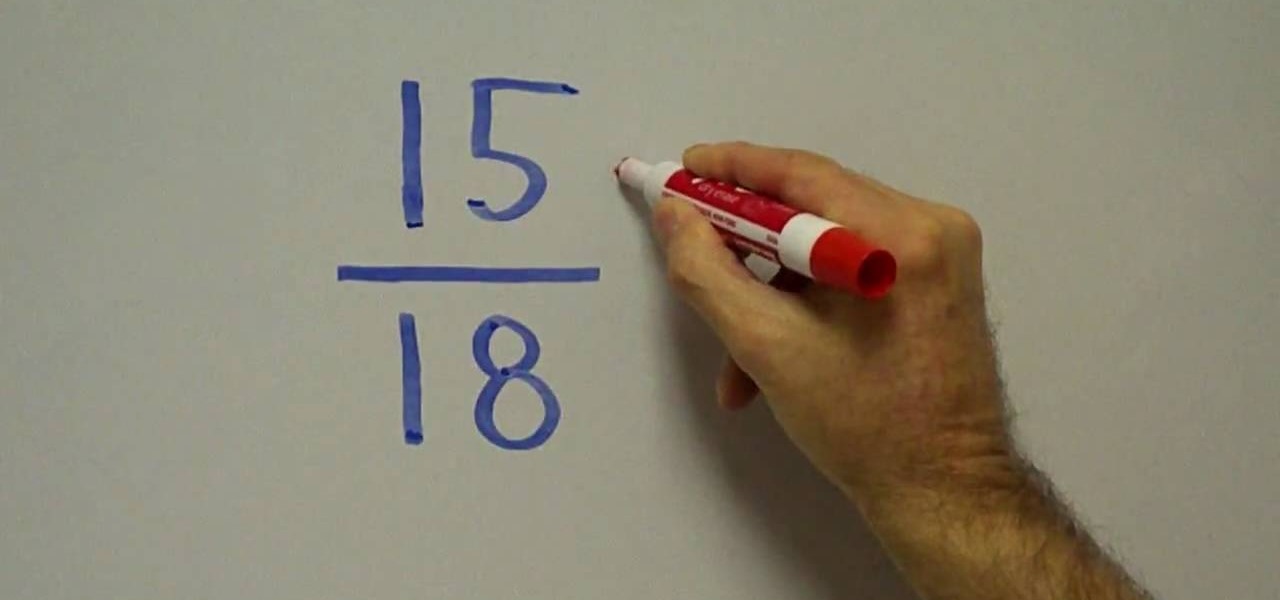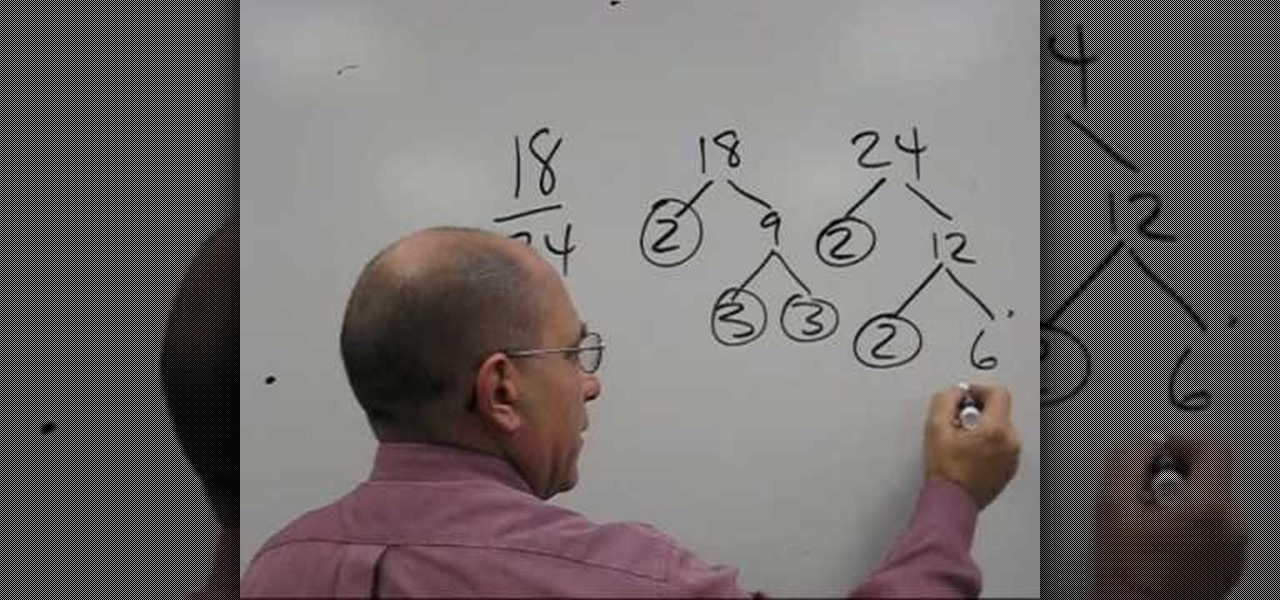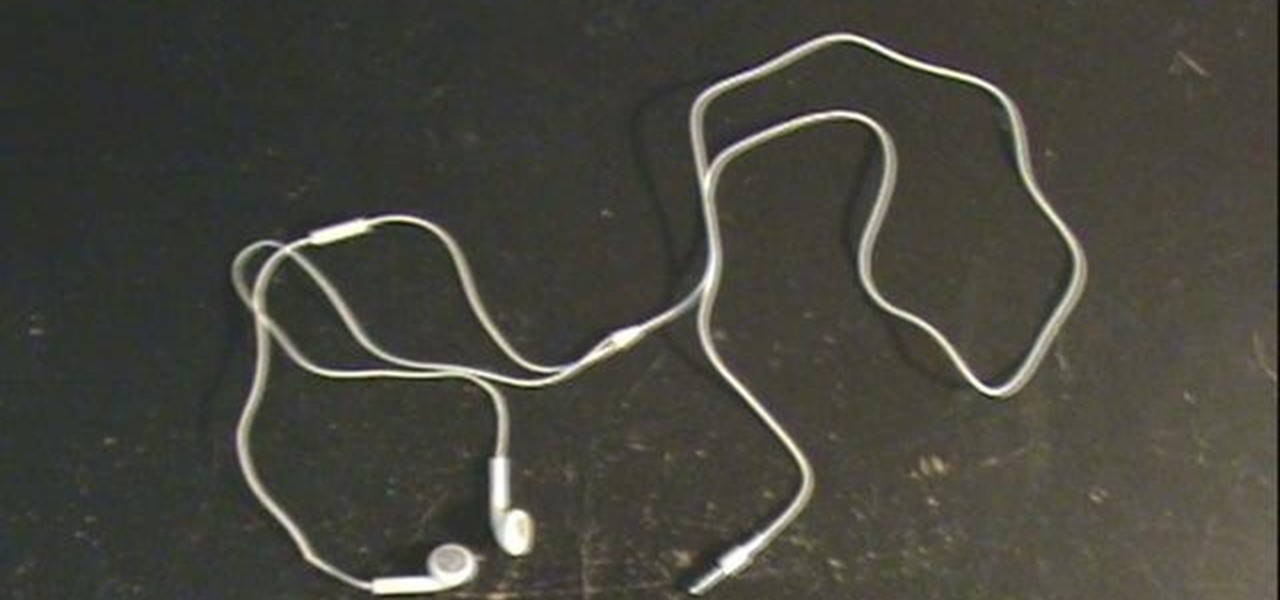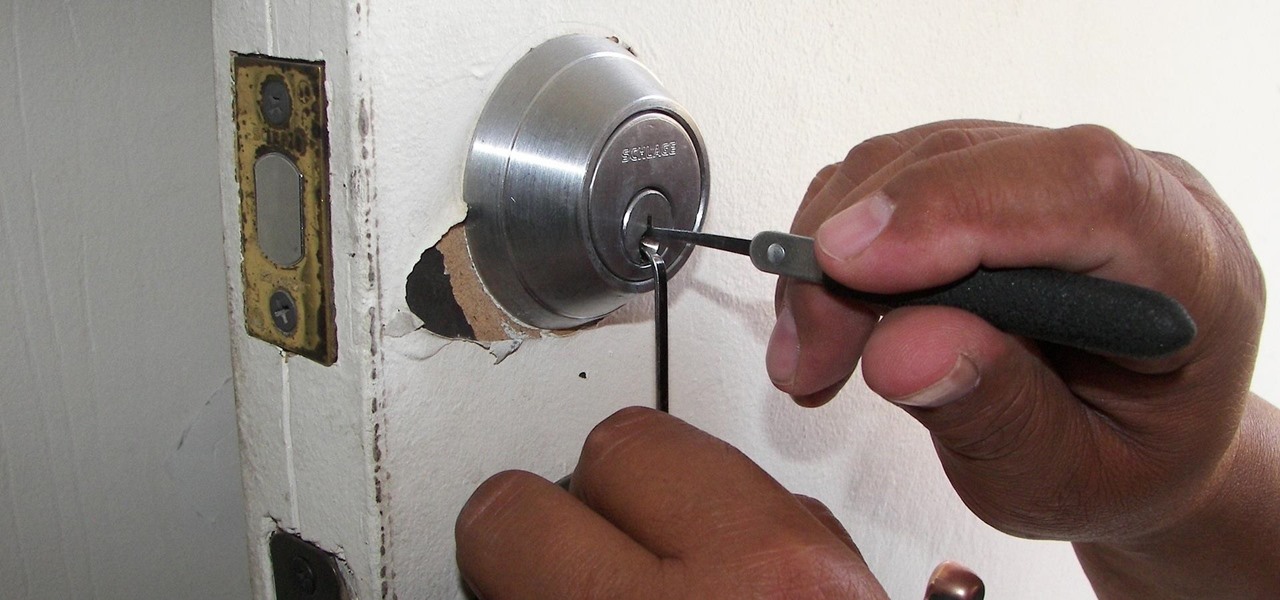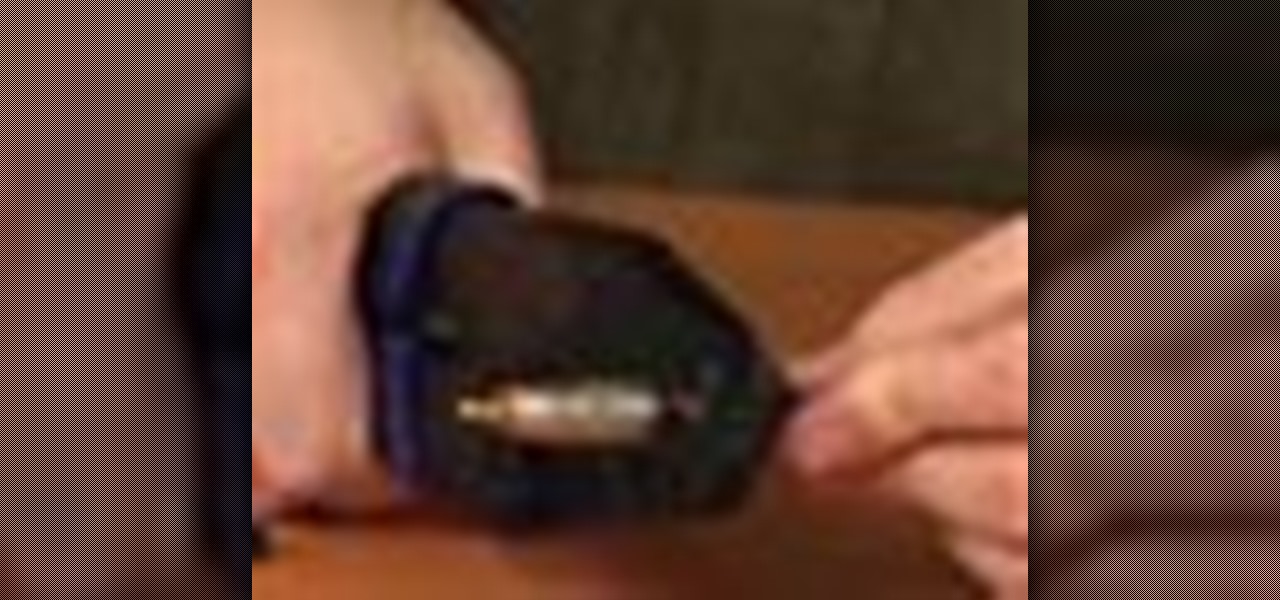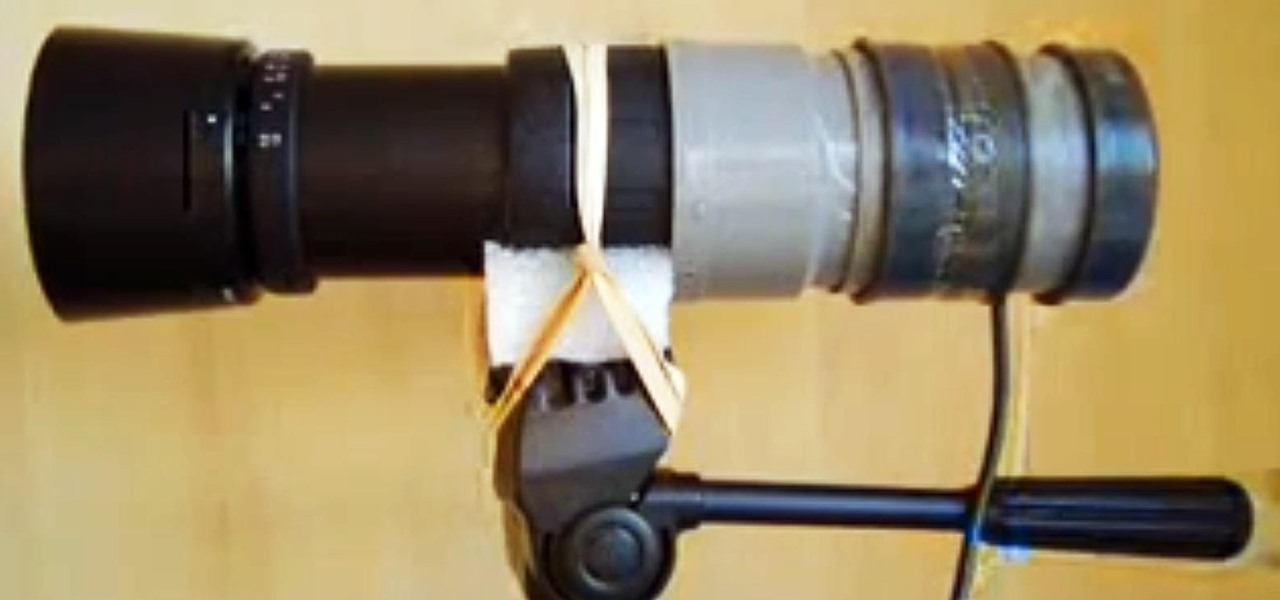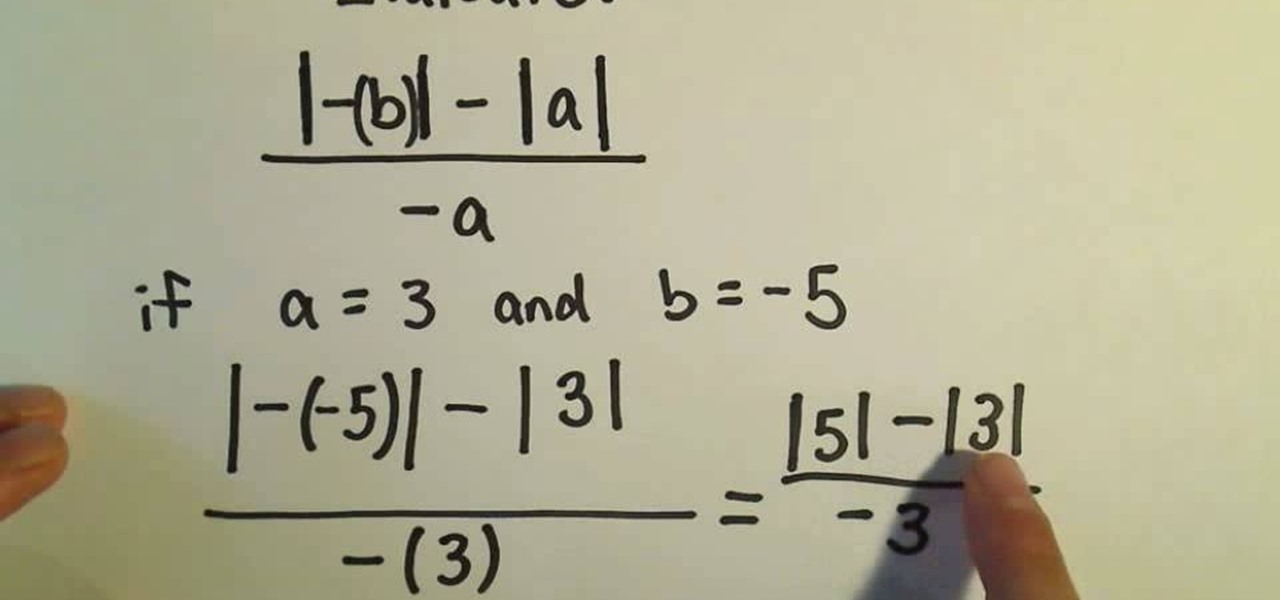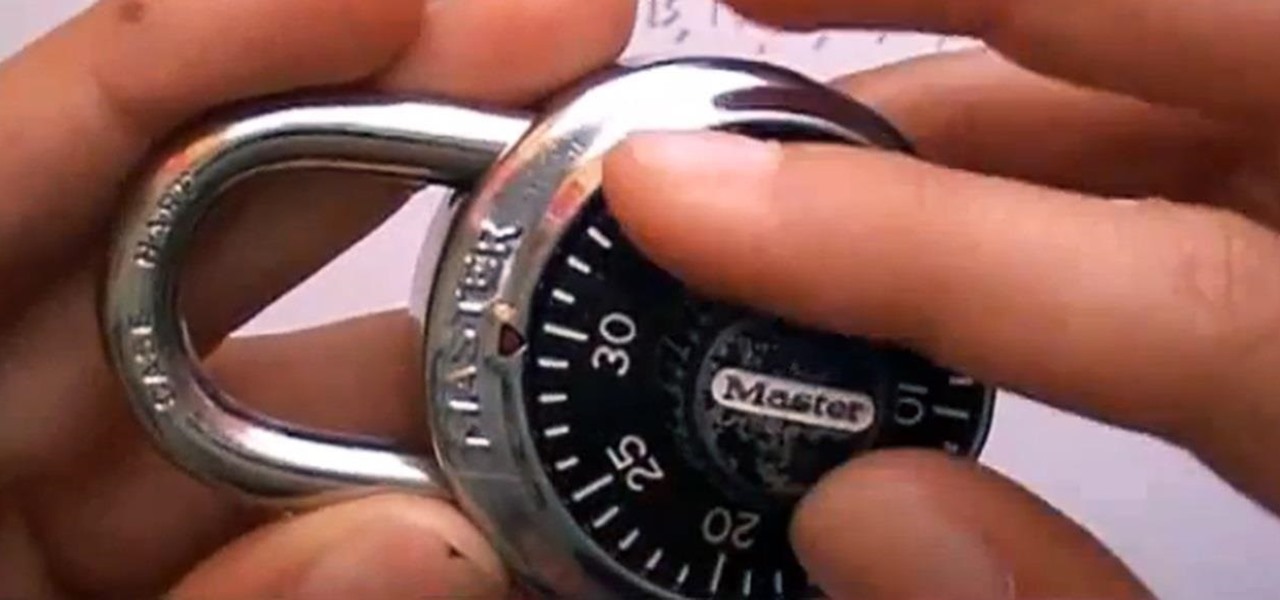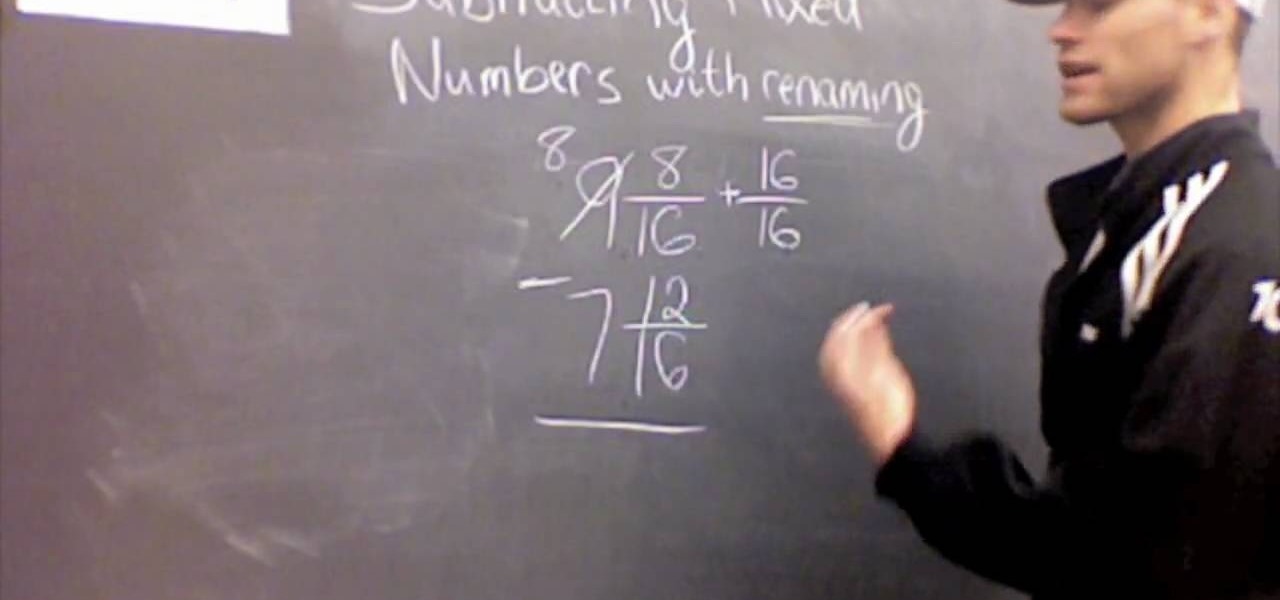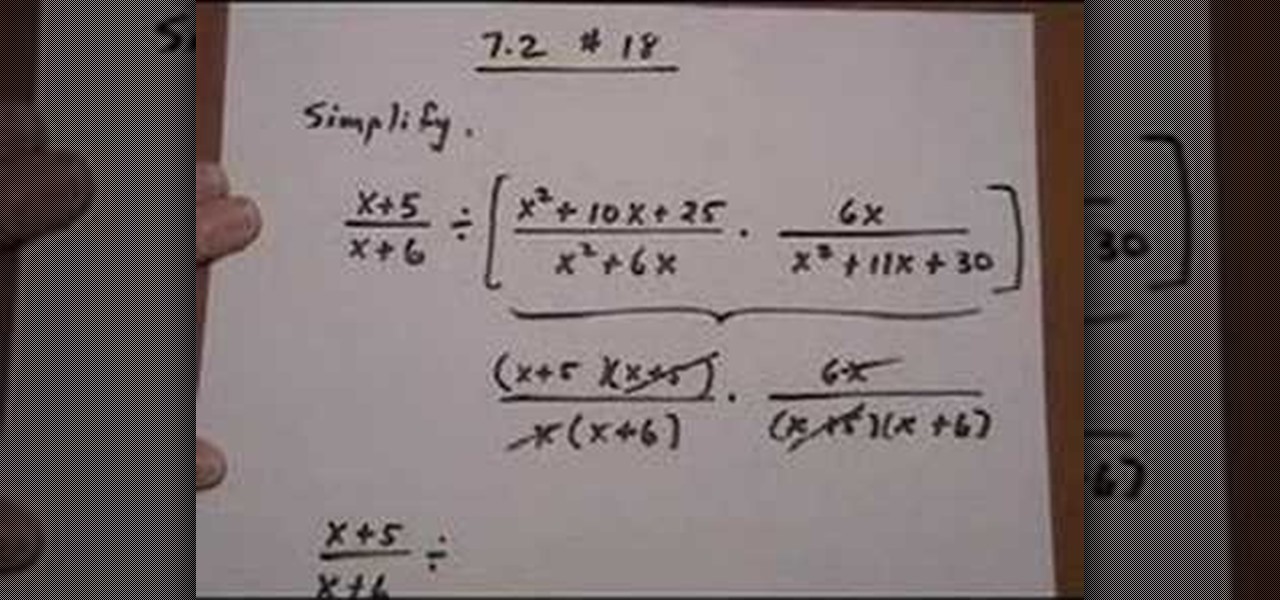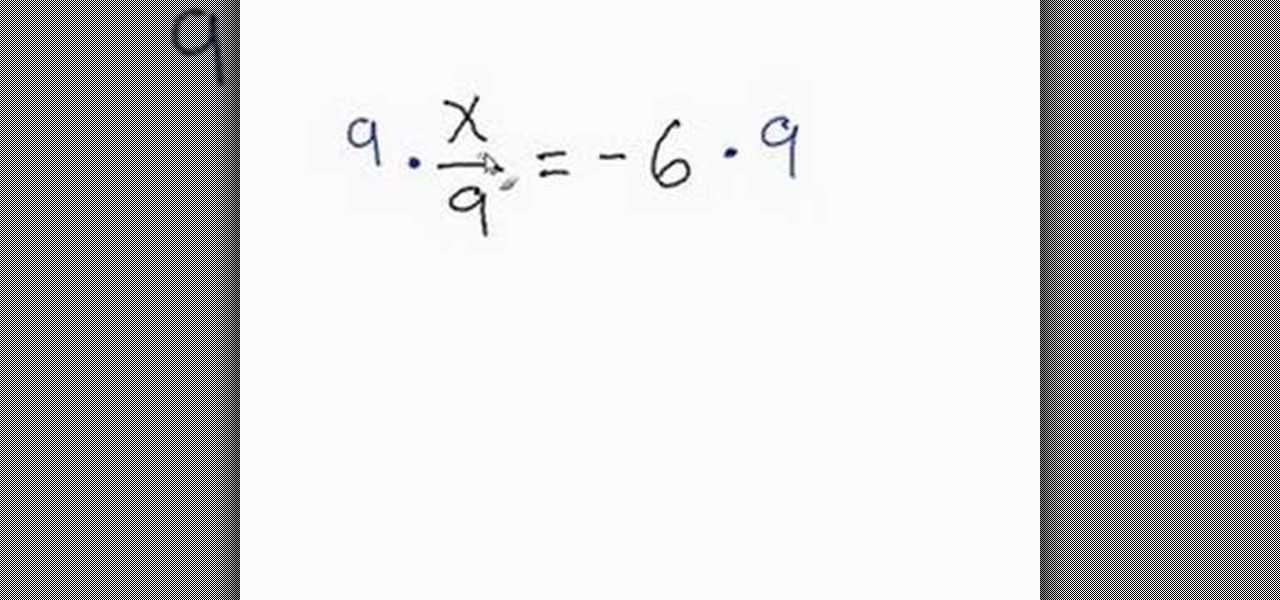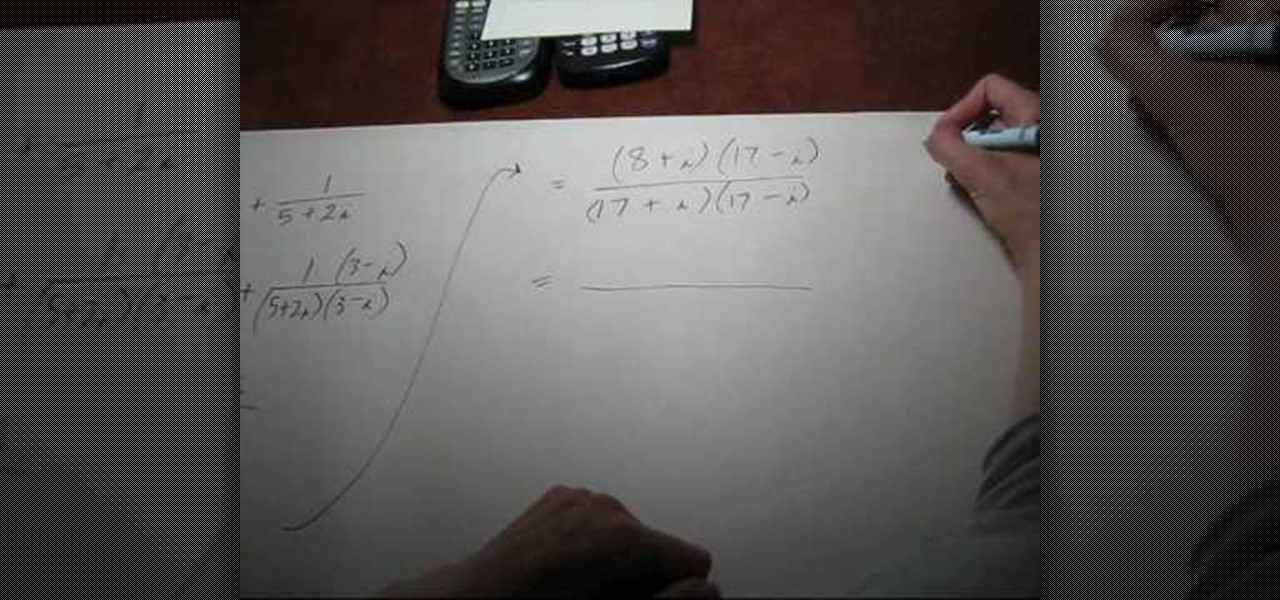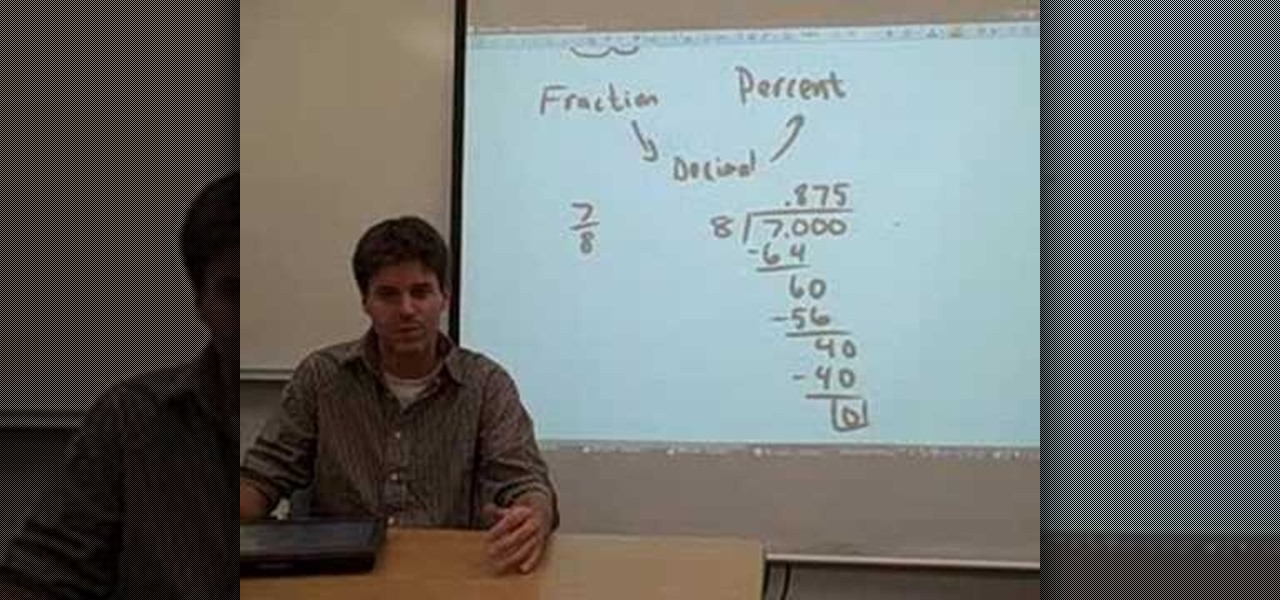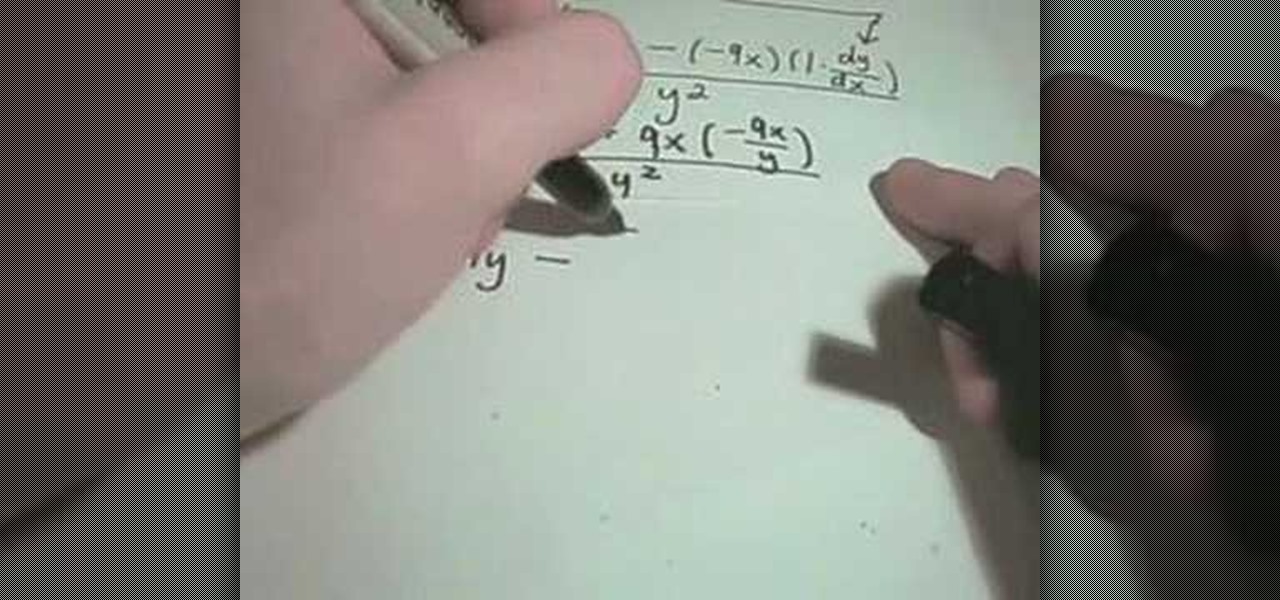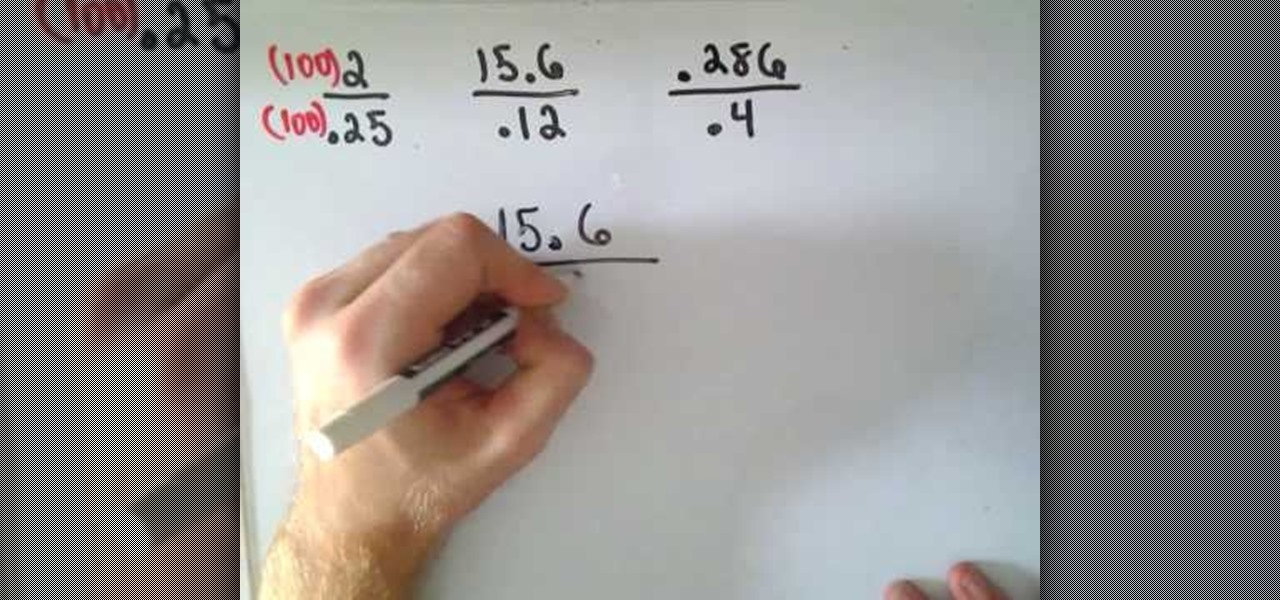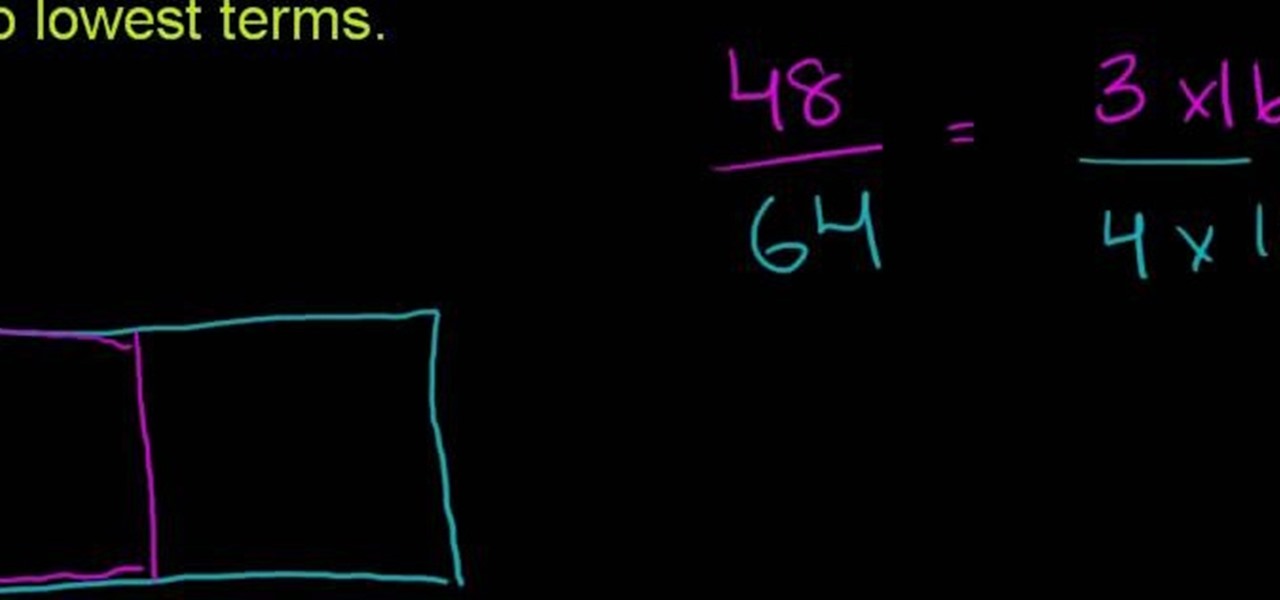
From Ramanujan to calculus co-creator Gottfried Leibniz, many of the world's best and brightest mathematical minds have belonged to autodidacts. And, thanks to the Internet, it's easier than ever to follow in their footsteps. With this installment from Internet pedagogical superstar Salman Khan's series of free math tutorials, you'll learn how to write a fraction in its lowest terms.

In this tutorial, we learn how to understand fraction multiplication by drawing. Start out by drawing a square on a piece of paper, leaving space around it. Next, cut this into vertical thirds (your equation is 1/3 x 1/2). After this, shade one of the thirds in the square. Use the side of your pencil to shade in the third. Then, cut the square into horizontal halves. The square will now be in equal shapes that are also called sixths. After this, shadow one of the halves with a different color...
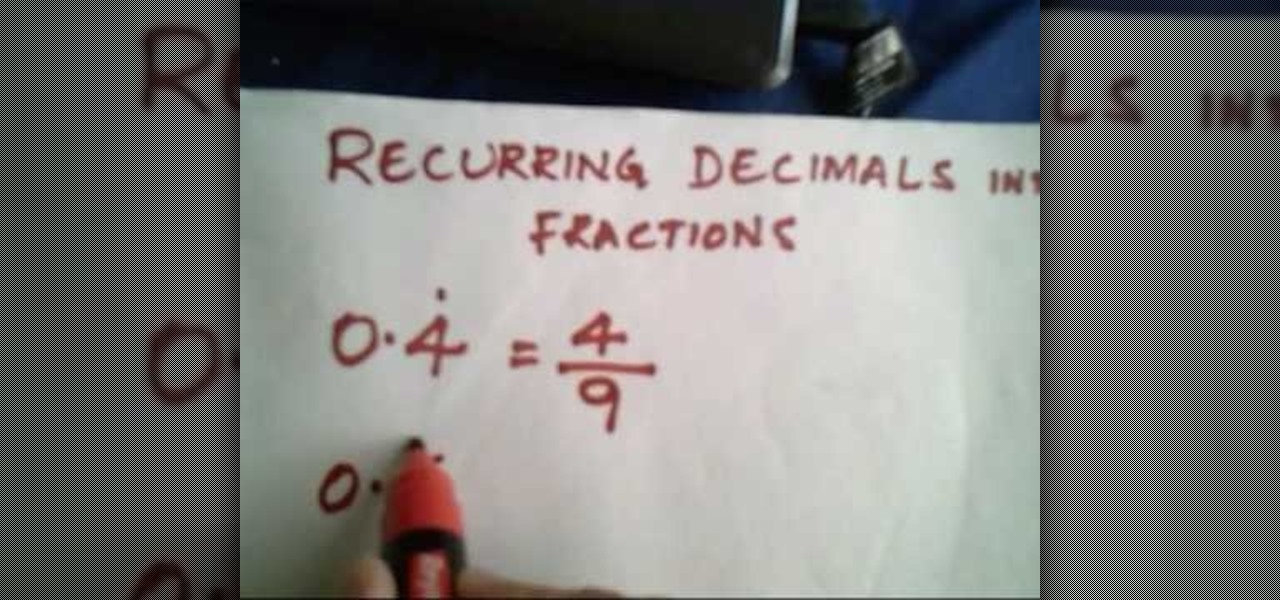
In order to pass that big Algebra test you will need to know how to get a fraction from a number with a recurring decimal. If you are looking for a shortcut, look no further than this tutorial.
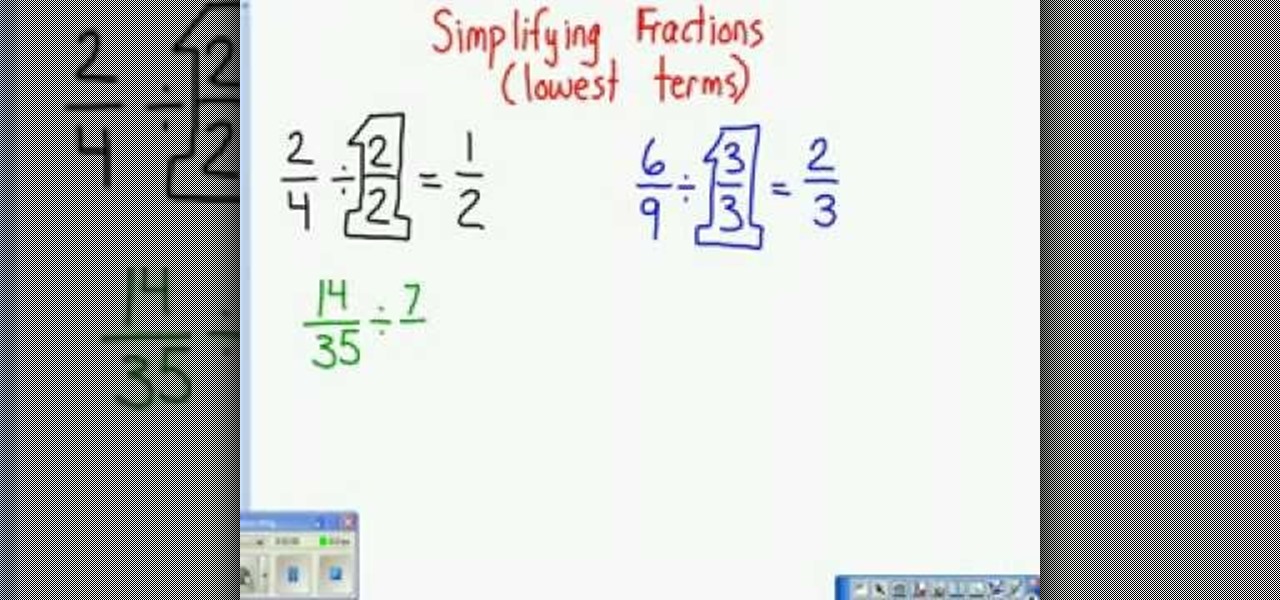
This video tutorial belongs to the Education category which is going to show you how to reduce fractions to their lowest terms. For doing any operation with fractions like addition, subtraction, multiplication or division, they need to be reduced to their lowest terms. To do this look at the numerator and the denominator and decide what number can divide both of them. Continue dividing till you can no more divide them. Now you get the lowest term of the fraction. For example, 2/4 can be divid...

From Ramanujan to calculus co-creator Gottfried Leibniz, many of the world's best and brightest mathematical minds have belonged to autodidacts. And, thanks to the Internet, it's easier than ever to follow in their footsteps. With this installment from Internet pedagogical superstar Salman Khan's series of free math tutorials, you'll learn how to convert improper fractions to mixed numbers.

This video teaches the viewer how to multiply fractions with mixed numbers. You would first need to multiply the denominator by the whole number, and then add the product to the numerator. This number is your new numerator and the new denominator is the same as before. For example, 2 1/5 = 11/5. Now you have an equation with fractions and no whole numbers. You may now proceed to multiply straight across. Multiply the numerators together to create a new numerator and do the same for the denomi...

This video demonstrates the way to find the area of a triangle using fraction measurements. The person presenting this video first writes the actual formula for calculating the area of the triangle. The formula is: the area of the triangle denoted by ‘A’ is equal to half of ‘b’ times ‘h’ where ‘b’ and ‘h’ are the base and height of the triangle, respectively. Now, to make it into fractions, he writes ‘b’ and ‘h’ over ‘1’. Then he asks you to calculate “what is one times ‘b’ times ‘h’” which i...

This video is a simple math video showing how to add and subtract fractions using different denominators. It begins with a man explaining briefly and sitting in front of a piece of paper. He writes out a group of fractions each one with different denominators, ending in three and five. To add appropriately, on must find a common denominator, which is fifteen. So he multiplies each by five and three, raising the denominators to fifteen. This will raise the fractions to six-fifteenths and twent...

Fractions are numbers written in the form a/b, where a, b are integers. Fractions can also be expressed in the form of percents by multiplying the value of the fraction with hundred. So we can always change percents to fractions and also fractions to percents. Remember that percent means hundredth. So percent means a fraction with a denominator of hundred. When you are given percents and asked to calculate its fraction, divide the percent with hundred. Now this fraction can be further reduced...

Need to know how to convert a decimal number into a fraction in basic arithmetic? It's simple. Learn how with this free video lesson. From Ramanujan to calculus co-creator Gottfried Leibniz, many of the world's best and brightest mathematical minds have belonged to autodidacts. And, thanks to the Internet, it's easier than ever to follow in their footsteps (or just finish your homework or study for that next big test). Convert a decimal number into a fraction.

This video demonstrates how to multiply and divide fractions in algebra. From the people who brought you the Dummies instructional book series, brings you the same non-intimidating guides in video form. Watch this video tutorial to learn how to multiply and divide fractions in algebra, For Dummies.

This video shows you how to easily convert a fraction to decimals. To convert a fraction to a decimal, you simply divide the numerator by the denominator. You first need to move the decimal point in the divisor to the right until it is a whole number. Then, you have to move the decimal point in the dividend to the right by the same number of places the decimal point was moved. Then divide the new dividend by the new divisor. Please note you may need to move the decimal point two places to the...

You should always try to reduce a fraction until it can't be reduced anymore. To do this, look at your fraction and figure out the greatest number BOTH the numerator and denominator can be divided by. This is called the GCF - the greatest common factor. In the video, the problem you must solve is (15/18). What number can be divided into both 15 and 18 evenly? The answer is 3.

In this math tutorial, you will learn how to reduce fractions using the prime factoring method. The narrator, a math teacher, of the video begins by defining what prime numbers are. This is important to know. When reducing fractions you need to reduce both the numerator and the denominator down to numbers that cannot be reduced by any other numbers but 1 and itself (prime numbers). The method the video teaches is to find the prime factors of both numerator and the denominator to simplify the ...

This video shows the method to solve word problems using proportions. In the given problem, we have to find the time taken by a person to type 390 words if the person takes 1 minute to type 30 words. This can be solved using proportions. We take two fractions which are equal. We type '30 words' in the numerator of the first fraction and 1 minute in its denominator. This fraction must be proportional to the second fraction. The second fraction has '390 words' in the numerator and the variable ...

You can certainly use Skype to make free Internet phone calls through your iPod Touch, though the microphone/headphone combo headset sold by Apple is thirty dollars. Make one for a fraction of that cost using a headphone splitter and the mod process outlined in this video.

You can make inexpensive vodka taste as smooth as a top-shelf brand with a few easy maneuvers. Instead of splurging on pricey Grey Goose or Ketel One, grab a cheap vodka from the liquor store, a water filter pitcher with a charcoal filtration system (like Brita), and a mesh collander. Now you can mix up a deliciously fancy martini for a fraction of the price. Na zdarovye!

Mechanical locks have been around since ancient Egypt, with the oldest known artifact found in the ruins of Nineveh, an ancient city in Assyria, Mesopotamia, which is just across the Tigris River from what is now Mosul, Iraq.

To solve a proportion for a variable you should employ cross multiplication. The basis of cross multiplication is the property which states that the product of the numerator of one fraction and the denominator of what it is set equal to is equal to the product of the remaining denominator and numerator. For example if you have x/15=21/45 you simply need to multiply x by 45 and 15 by 21 then set them equal to each other. The result of this is 45x=315. To solve this new problem for x, divide bo...

Systm is the Do-It-Yourself show designed for the common geek who wants to quickly and easily learn how to dive into the latest and hottest tech projects. They will help you avoid pitfalls and get your project up and running fast. In this DIY episode, see how to make high quality audio/video cables.

The first thing anybody really thinks about after watching Rear Window is how much they want their own telephoto lens. These days, they aren't cheap, so how do you go about spying on your neighbors without putting down so much dough?

For just a fraction of the cost of a pair of expensive designer distressed jeans, you can make your ripped pants own at home! With just a few household items and a bit of time, you can get that worn appearance by adding a few holes and using bleach to get the right faded look.

Have you always wanted longer hair but weren't blessed with full locks? If you need a quick fix and don't want to spend a fortune on professional hair extensions, follow this video. In this tutorial, you will learn how to create your very own extensions at home for a fraction of the price. So, if you are feeling like a change, check out this instructional clip and start weaving.

Need to know how to simplify expressions involving absolute values? It's an absolute cinch. Learn how with this free video lesson. From Ramanujan to calculus co-creator Gottfried Leibniz, many of the world's best and brightest mathematical minds have belonged to autodidacts. And, thanks to the Internet, it's easier than ever to follow in their footsteps (or just finish your homework or study for that next big test). With this free math tutorial, you'll learn how to divide one fraction into an...

Lock picking is a great skill that takes lots of practice and patience to master, but some locks simply can't be picked, like a Master Lock combination padlock. With a combination lock, you'll have to do it the old-fashioned way—cracking combinations.

This video is about subtracting mixed numbers and renaming. 1. Start on the right side of the problem.

In this video, the instructor shows how to multiply and divide rational expressions. To solve a rational expression that contains many terms, solve step by step by following the order of operations. Order of operations advises one to work the parenthesis part first; so solve the equation inside the parenthesis first. If you have a fraction multiplied by another fraction, first factorize the numerator and denominator of both the fractions. Cancel out any common factors simplifying it. In case ...

This video will show you the simple mathematical concept of solving a single-step equation using multiplication. This is very useful for equations in which you need to solve for a variable and the variable is a part of a fraction. The example provided in the video shows a very fast and simple way to solve these types of problems. By multiplying your fraction by the denominator of the fraction, you will cancel out the fraction and multiply the other side by the same number. By following these ...

This video teaches you to subtract mixed numbers with borrowing. Consider 2 mixed numbers. For example 8 and 2/7 and the other 5 and 4/5.You have to subtract 5 and 4/5 from 8 and 2/7. First you have to convert the fractions to their common denominator. To equate the denominators of these two fractions you have to multiply the first denominator with the numerator and the denominator of the second fraction and also multiply the numerator and denominator of the first fraction with the denominato...

This video shows us how to multiply mixed numbers with the whole numbers. First thing you need to do is to change the mixed number into an improper fraction by multiplying the denominator with the whole number and add the resulting number with the numerator. The resulting number will be placed as a numerator with the denominator being the same. Next, is that we can't multiply a fraction with a whole number. So we need to change the whole number into a fraction and this is done by putting the ...

In this tutorial the instructor shows how to calculate the sum of reciprocals of complex numbers. If you have to find out the sum of the reciprocals of two complex numbers first you will have to find out the least common multiple of the denominators. To do this multiply the numerator and denominator of the first fraction by the second complex number. Similarly multiply the numerator and denominator of the second fraction by the first complex number. Now you will have two fractions whose denom...

This video tutorial shows you how to multiply mixed numbers. When doing this the first thing that you want to do is put the mixed numbers into a improper fraction form. From this step you can simplify the numbers based on what you are using. In this case you can take out the 3 and 21 and simplify it to 1 and 7 respectively. From here you do the basic multiplication to get one improper fraction. Then turn this number back into a mixed fraction to complete your problem.

A guy from the website Math Problem Generator explains, in this video, how to easily multiply mixed fraction numbers. First, he demonstrates that you need to convert both of the numbers to improper fractions. Then he shows that you need to multiply the two resulting numbers together. The resulting fraction is also improper, so it needs to be converted back to a mixed number fraction. In the example that he provides, he shows that one and a half multiplied by one and a third becomes two and a ...

This video begins with teaching of percentage lesson. He is also teaching conversion of percentage to decimal and vise verse. This teaching is using advanced technology note pad when he goes on writing on pad that will display on screen. He is telling that percent 35% in decimal it is .35 and if decimal 2 it is 20% in percent. And he was teaching how to convert fraction to percent by taking one example 7/8 , to convert this first we have to divide 7 by 8 then we get answer .875 then to conver...

Taking this formula 9x²+y²=9 your instructor shows you how to find the solution for the variable y. Finding a second derivative is no more difficult that finding the first derivative, you only have to do the problem equation through twice. The derivative of 9x² will be 18, of y² will be 2y [this is the same as 2(y), 2 x y or 2 * y]. The problem now goes -18x + 2y dy/dx=0. This equation is solved for dy/dx making the next step in the problem go -18x 18x+2y dy/dx=0-18x, 2y dy/dx= -18x. The next...

In this tutorial, we learn how to add rational expressions. When you have two rational expressions, you will first need to factor every denominator. After this, find the lowest common denominator from all of them. After this, rewrite every fraction so it has the lowest common denominator for the denominator. Leave it in factored form for the denominators. Multiply the top and the bottom to find the answer for each of the fractions in the equation. When finished, make sure you find the most si...

Looking for a primer on how to divide mixed numbers in basic arithmetic? See how it's done with this free video math lesson. From Ramanujan to calculus co-creator Gottfried Leibniz, many of the world's best and brightest mathematical minds have belonged to autodidacts. And, thanks to the Internet, it's easier than ever to follow in their footsteps (or just finish your homework or study for that next big test).

Khanacademy tackles problems involving multiplicative inverse (i.e. taking the number one and dividing it by that number) and dividing rational numbers in its simplest form (lowest common form).

Here we are, learning how to divide decimals. So we are dividing a whole number or a fraction by a fraction. How this presenter does this is by moving the decimal two places to the right on both the top and bottom of the sum. In other words, he multiplies the two numbers by 100. So 2 becomes 200 and .25 becomes 25. So much easier to divide 200 by 25 than to divide 2 by .25. Provided you've multiplied both the top and bottom by the same amount, the result will be the same, because the relative...

In this video the instructor shows how to divide rational expressions. To divide rational expressions follow this simple four step approach. In the fist step change the division to multiplication by flipping the second fraction. Now the original division simplifies to multiplication. In the second step factor the terms of numerators and denominators in the two fractions. In the third step cancel the common terms in the numerator and the denominator. Now finally in the fourth step multiply all...








